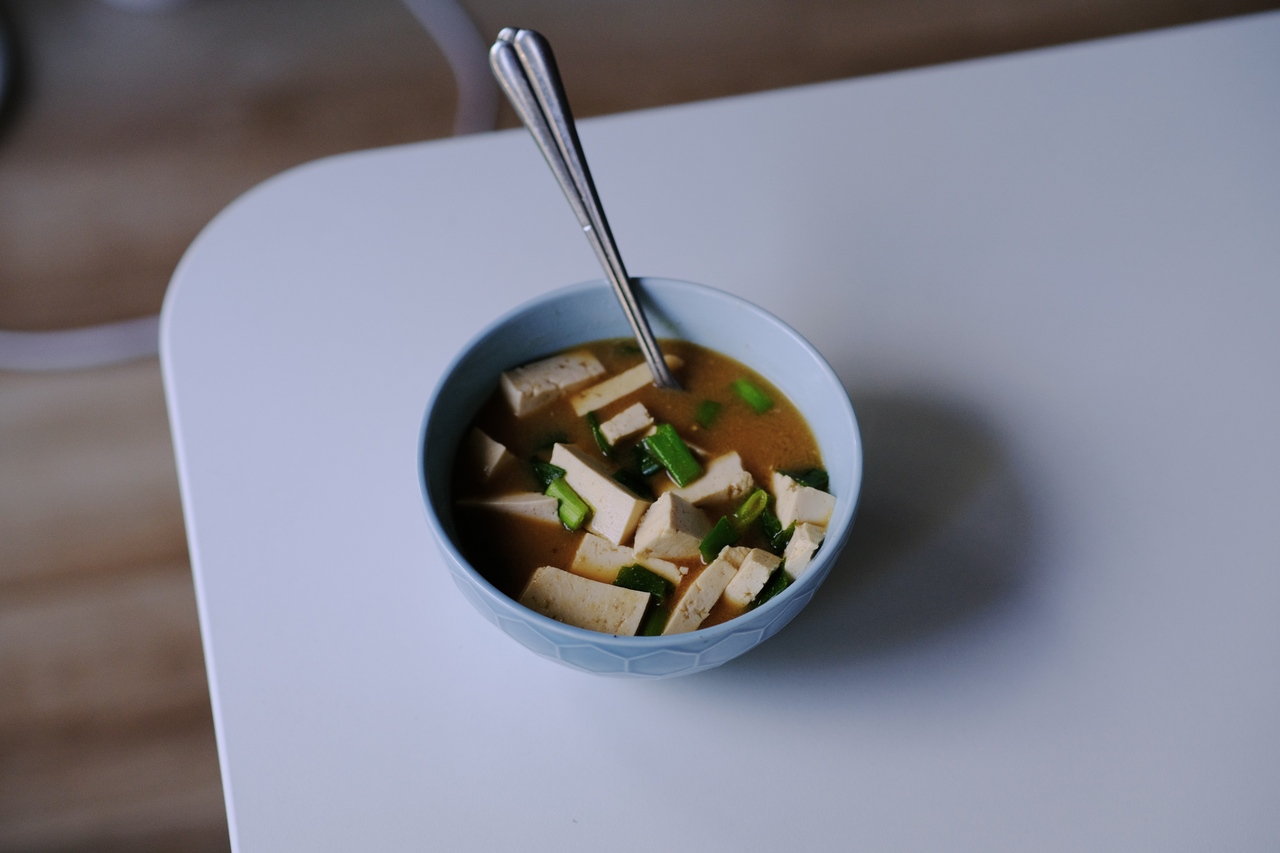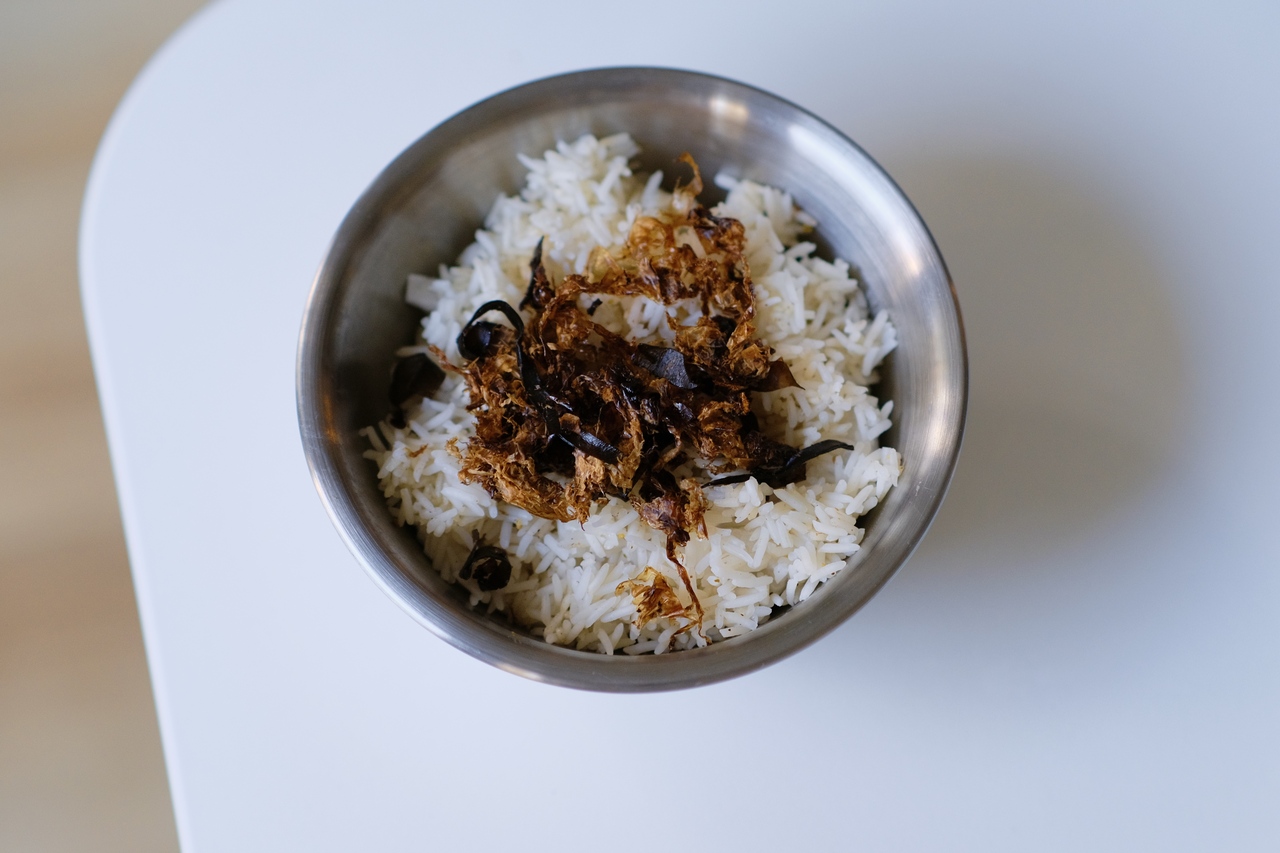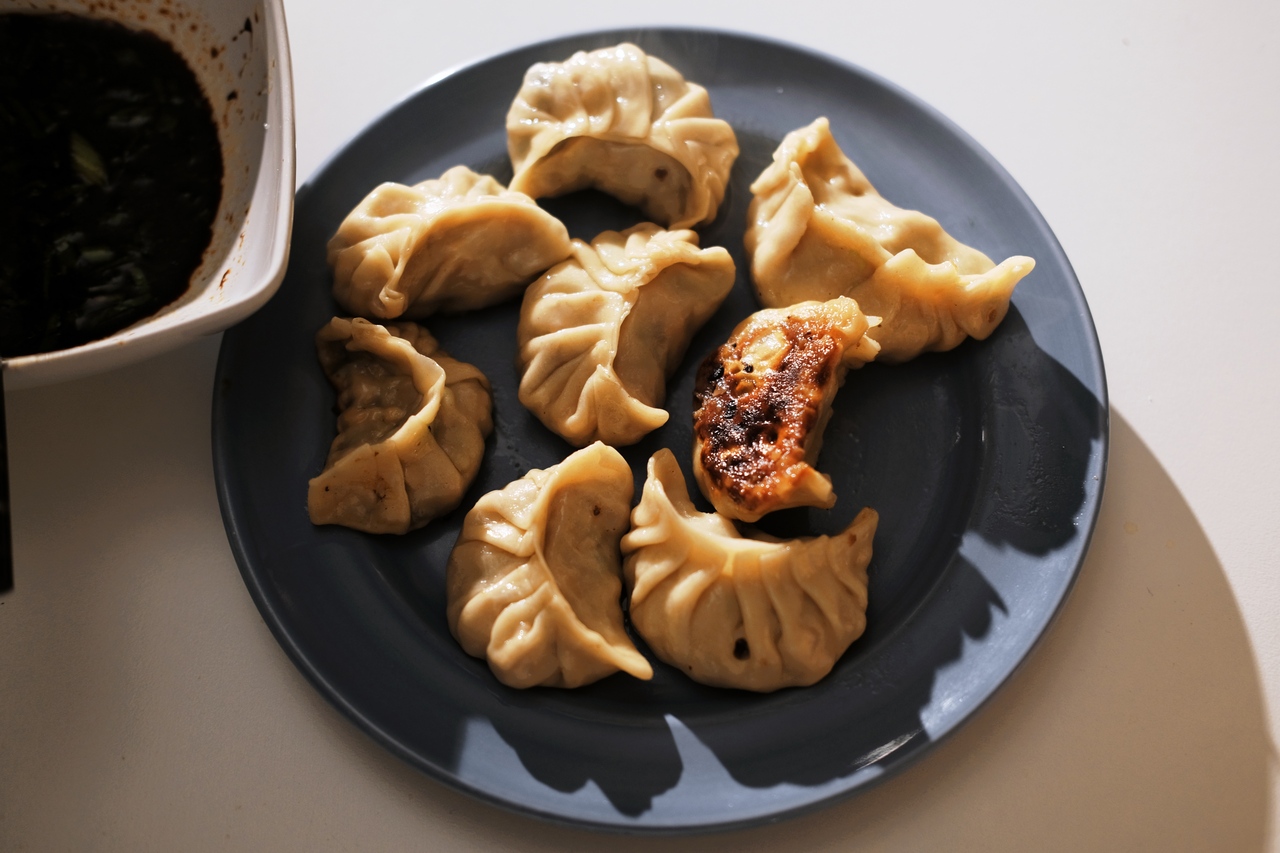Miso soup

Miso soup with tofu and spring onions for lunch, in my apartment in Amsterdam, 2021.
Starting off this wonderfully delicate and interesting cuisine with a very simple dish. A light miso soup, together with rice, serves as a staple food for the mornings in Japan. For dinner, I will be bulking the dish out with leafy vegetables, noodles, and tofu.
There are a few resources I enjoyed while preparing. Kenji's video on miso soup is very insightful, as usual. And there is the delightful Just One Cookbook post on this dish. I will remember Namiko Hirasawa Chen's great website for future dives into the Japanese cuisine.
In recent years I have cooked a variety of Japanese food already. There is that time I made a ramen broth from scratch with a friend. And other times we rolled our own sushi. These past experiences provide some springboards for future research directions.
The miso soup builds on top of a broth called dashi, so we will make that first.
Fill a pot with water and put in kombu (1% of the water). Kombu are strips of dried kelp (a specific order of seaweed), it is a natural source of umami. Slowly bring to a simmer over medium-low heat. Once evidently simmering, take the pan off the heat and stir in katsuobushi (also 1% of water quantity). Katsuobushi are dried bonito flakes, thus strictly speaking we're not eating vegetarian today. Let the flakes steep for about ten minutes, similar to how we would with tea. Pour the broth through a sieve to filter out the kombu and katsuobushi and save them for later to make furikake.
Bring around three hundred milliliters of broth per serving to a simmer. This time I did not have any denser ingredients, but in principle we would add those in while starting to heat up the broth. Instead, once the broth got simmering, I added some udon noodles and chopped napa cabbage to the pot. Let it continue for a few minutes more.
In this phase we will be adding our miso paste. I used a shinshu miso (yellow to light brown; longer fermentation than a white miso) with decreased sodium. With roughly twenty grams per serving (three hundred milliliters), stir in small amounts at a time making sure to incorporate everything first.
With the miso swirled in, I added a small block of firm tofu cut into small cubes. Stir everything carefully and let bubble to a desired temperature.
I served my miso soup in a large wooden bowl while longing for the spring onion garnish that wasn't able to be formed from my pantry.
Furikake

Dried and seasoned kombu and katsuobushi flakes meant for seasoning rice and other dishes, Amsterdam, 2021.
From the leftover kombu and katsuobushi I made this "rice seasoning" inspired by Just One Cookbook. Cut the kombu into small pieces and put them into a small saucepan along with the katsuobushi, still moist. Over low heat, cook until the katsuobushi starts to separate a bit. Add a mixture of soy sauce, sugar, and salt. Let this simmer slowly until all of the liquid has evaporated. Continue for just a while longer — treading carefully — to crisp up the flakes and kombu. Get them out of the pot and onto a flat sheet to let them cool. We can now sprinkle them with sesame seeds and nori.
Furikake can be used to season rice, noodles, onigiri (TODO), avocado, egg, and plenty of other dishes.
Gyoza

Vegetable gyoza, Amsterdam, 2022.
Noemi and I made vegetable gyoza for dinner. She had made hundreds of these before, so I was humbly learning from her experience. Just One Cookbook formed a good external resource.
Gyoza are pan-fried dumplings. The steps for preparation are roughly as follows:
- Finely mince all ingredients for the filling.
- Stir fry the filling and add sauces near the end.
- Prepare dough for the wrappers.
- Roll, fill, and fold the wrappers.
- Fry and steam a batch of gyoza in a pan.
We used a good number of ingredients for our filling:
- Rehydrated shiitake mushrooms
- Crumbled tofu
- Cabbage
- Carrots
- Onion
- Garlic
- Ginger
- Miso
- Soy sauce
- Sesame oil
Items in italic form the seasoning sauce.
The gyoza wrappers are made from dough with 50% hydration. Mix flour and water, knead for a good ten minutes, and let it rest for thirty minutes or so. Cut small pieces and flatten then roll out into a round wrapper. Lightly dust with cornstarch on both sides for more crispiness and stickiness.
Be sure to cut up all the vegetables in similarly small pieces. Stir fry until softened and a good deal of moisture has evaporated. Mix in seasonings and simmer for a few minutes. Take out of the pan and let it cool.
Place a little filling on a wrapper. Bring opposite sides of the wrapper to each other, press the top together. Work your way to both sides one-by-one, folding one side and then attaching it to the other side, creating the ribbled top. The folds are mostly performed by your thumbs.
With eight pieces folded, we were ready to fry a batch. Heat a few tablespoons of oil and place all eight gyoza in a pan. After a minute, their bottoms should have crisped. Throw a few tablespoons of water in the pan and cover with a lid. This steams the gyoza in a few minutes. Take out and serve with rice vinegar and soy sauce.